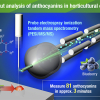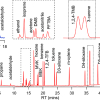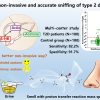Bruker is partnering with the Australian National Phenome Centre (ANPC) at Murdoch University to support the work of their researchers into the COVID-19 pandemic threat. The ANPC team, led by Professor Jeremy Nicholson, and working with the South Metropolitan Health Service COVID-19 Response Team and the broader Western Australian (WA) healthcare community, has launched a major research and diagnostics project to better understand and predict variation in COVID-19 severity and determine the complex genetic, environmental and lifestyle interactions that influence its pathogenicity in individuals. Later they will engage with clinical trials of novel antiviral agents and when available vaccines in order to predict responder/non-responder outcomes.
The goal is to deliver diagnostic and prognostic solutions in an accelerated time-frame. Most importantly, the risk of severity of infected patients needs to be assessed rapidly to help guide and optimise the clinical patient pathway. Researchers at the ANPC will use a range of NMR and MS instrumentation, as well as data modelling approaches, to perform broad and deep metabolic analysis of the molecular, physical and biochemical characteristics of blood plasma and urine samples to create informative translational models. These models will predict variation in the severity of the disease and help understand differential responses to therapeutic interventions.
Professor Nicholson said: “At the ANPC, we are dedicating 100 % of our resources to the COVID-19 fight for at least a year. This is the greatest emergent healthcare challenge on the planet and there is no better equipped metabolic lab in Australia, or possibly anywhere in the world, to undertake this type of investigative work in an excellent clinical and hospital framework. Linked to our genomics team, led by Professor Simon Mallal and Associate Professor Mark Watson, we’re setting out to identify specific biomarkers of the disease to figure out who has it, how we can detect it and stratify patients by severity risk, and assess the real time patient responses to treatments.”










